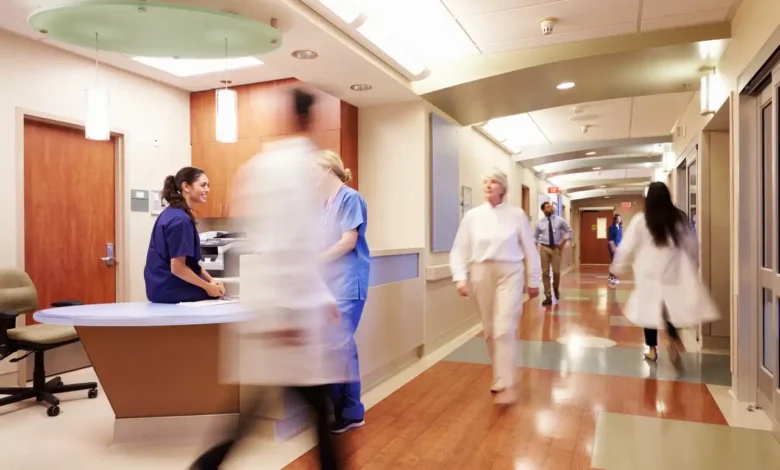Medical-Surgical Nursing Specialty | Who Works in This Field?

An abbreviation for medical-surgical procedures is Med-Surg. In the Med-Surg nursing specialty or hospital floor, a variety of patients are being cared for. These include fresh post-operative patients and in patients with diabetes, hypertension, myocardial infarction, and other chronic diseases. The medical-surgical nurse is a unique nursing specialty who works in the inpatient setting, handling between three and six patients per twelve-hour shift. These nurses work with all types of patients and possess a wide range of nursing skills. Within the Med-Surg setting, nurses have to be extremely flexible and pool upon a large variety of complex skills within short time-frames.
Medical-Surgical Nursing Certification is not required, but many nurses pursue it because of increased income, job opportunities, and determination. On the Med-Surg floor, there are all kinds of patients. You’ll have the opportunity to see patients with a wide range of different medical conditions, including cardiac, neurology, GI, urology, and many more. Typically, medical-surgical nurses work in acute care hospitals. In addition, the skill set acquired through taking care of these patients is often employed in other nursing specialties. This is a perfect unit for nurses that are just starting out, new graduates, and a great place for many licensed practical nurses (LPNs), certified nurse assistants (CNAs), and registered nurses (RNs). Some nurses like the Med-Surg unit and choose it as a permanent unit to stay in.
Nurses on a Med-Surg unit use different skill sets from their clinical practice to care for a variety of patients. The nurses in these positions focus on patient safety, care planning, medications, procedures, and other needs of a diverse patient population in the acute care setting. Patients may require cardiac surgical care, postoperative surgical care, and GI and abdominal issues, among other services. Many surgical wounds are treated on this floor as well. The care and work are very different from other specialty units like the ICU, ER, OR, and others.
What Are Nurse-to-Patient Ratios, and Why Are They Important?
When it comes to patient ratios, the quality of care to the patients is at stake. When talking about nurse-to-patient ratios, this means how many patients one nurse is or is going to care for at a time. Most Med-Surg nurses will see anywhere around four to nine patients at the same time during the course of a shift. Obviously, the lower number of patients to nurses increases the amount of time the nurses are able to dedicate time and attention while on a shift. Since every hospital and care facility is different, it is an important topic to bring up before a per diem or PRN shift to better understand the demands of that particular hospital setting.
One thing to keep in mind when thinking about ratios when it comes to Med-Surg is that patients are constantly turning over, in the sense that there are always more being admitted and more also being discharged. These are also within the skill set of a nurse within the Med-Surg unit. While a nurse may only have four patients at a time, maybe one will be discharged, but three more are already being admitted to the hospital or care facility. Some specialty care facilities have a one-to-one patient-to-nurse ratio because the care and attention are increased for that patient and it increases nurse and clinician safety. You may have a shift where you only concentrate on one patient, but that patient needs constant monitoring and care.
Continuing Education is Important to Med-Surg Units
Technology is always changing within the medical profession, and the best way to keep up to date is by making sure that both veteran and new nurses follow the recommended hour and training for continuing education credits. Just within the past couple of years nurses have seen new implementations of machine and monitoring devices due to the pandemic and nurses all over the world have had to adapt very quickly. An example of how technology is affecting the Med-Surg unit is by new monitoring devices like the hand hygiene monitor, which tracks the nurses to make sure they are washing their hands both before entering a patient room and after they leave. It’s wireless and does not require documentation constantly, and helps to free up some much-needed time to focus on other patient tasks. Another example is the use of smartphones and tablets within the Med-Surg units to help with things like notes to the doctors, medicine ordering, monitoring, and many tasks that otherwise take up a lot of time for nurses. The software programs and use of all of these new machines and protocols require extensive training and continuing education credits to help keep nurses up to date on all the latest techniques, best practices, and compliance issues. The Academy of Medical Surgical Nurses is a great resource to research more information about Med-Surg learning and development.
How and Where to Find Med-Surg Jobs
With Nursa™ finding shifts for the Med-Surg unit has never been easier. Nursa™ is an application you download. You have to fill out a profile and upload a few documents, and once you’re done you can start looking for per diem shifts in your city. Another great feature on Nursa™ is that you can use it for other cities that you would like to pick up a few shifts while exploring a new city or a mini work vacation.
If you would like to read more about the Med-Surg unit, please check another article found here.







